SureFire XC3 Weaponlight
SureFire’s XC3 is a compact handgun weapon light engineered to redefine duty-grade performance…
SureFire’s XC3 is a compact handgun weapon light engineered to redefine duty-grade performance…
The wait is finally over—UN12 Issue 22 is now on sale and hitting newsstands…
Designed to co-witness in the lower fifth of the optic window of a…
• Built for road trips and off-road use• Manual transmission equipped• Wrapped in MultiCam Arctic…
I designed the Button Man to give shooters a low-round-count, low-light-engagement drill that involved both…
The V Exercise was created for those who would like a continuous moving-and-shooting exercise that…
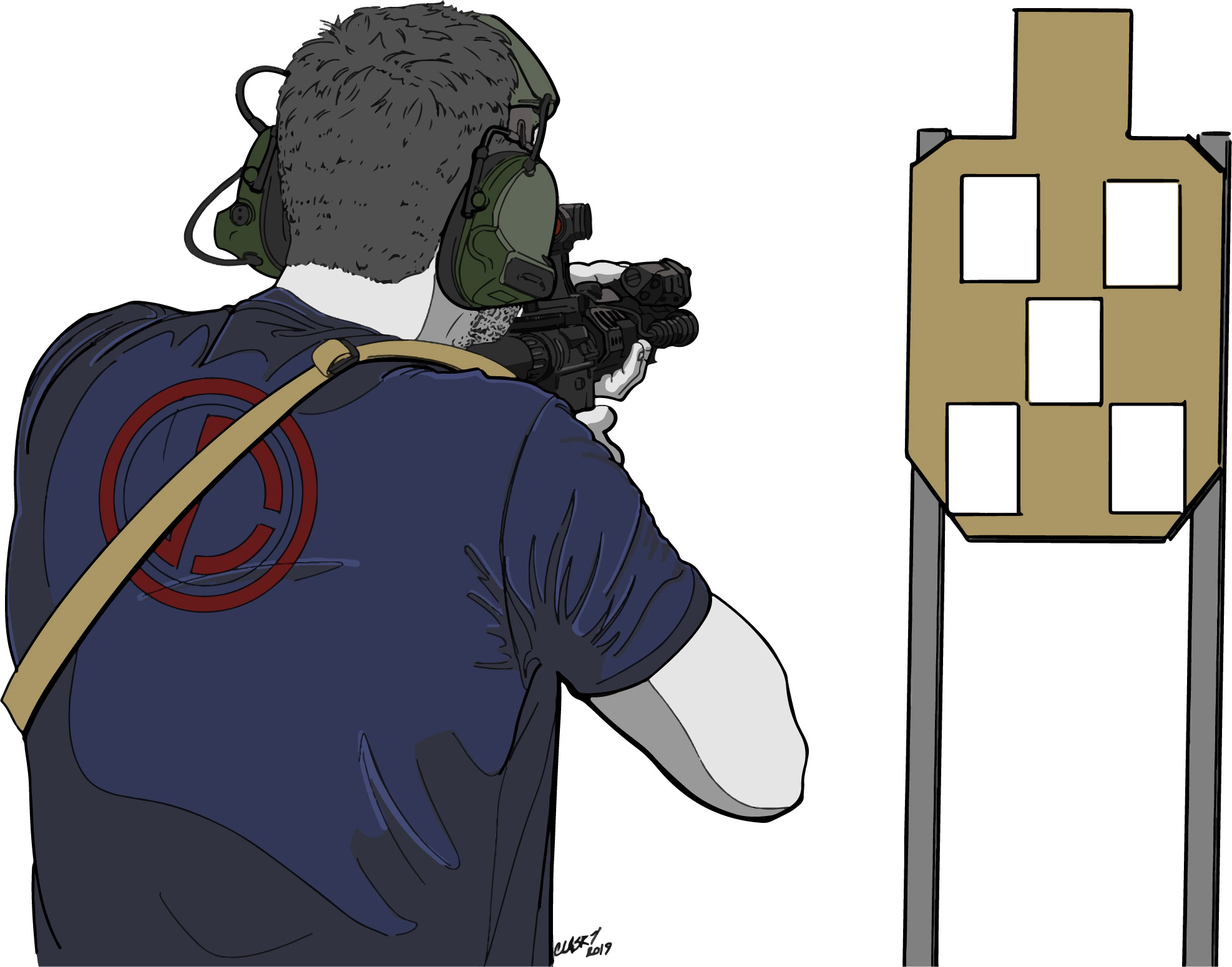
As an avid student and teacher, I use drills and exercises to isolate skills. Drills are not scenarios. They should be viewed as an exercise. Like going to the gym, you isolate certain muscles to work them out to get stronger.
One of my favorite exercises is the 5 in 5 Drill. It is an exercise that I developed to enhance and test a shooter’s skill. One of the things I look for in a drill is its way to push me mentally and physically. I want it to help develop the myelin around the central nervous system. Myelin insolates nerve cells to increase the speed at which information is transferred from cell to cell. If we can increase the myelin, then we can better develop our efficiency and consistency with how we shoot.
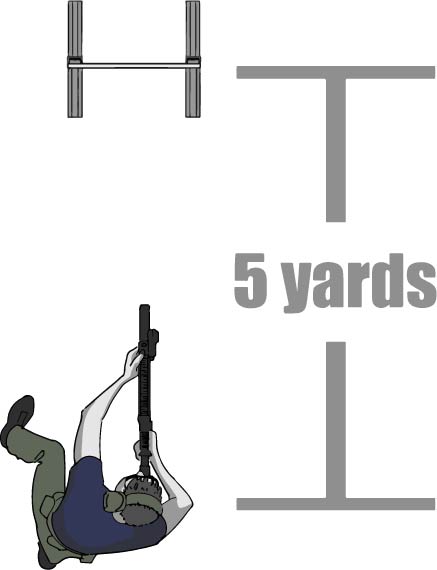
The 5 in 5 drill helps this development, which I believe is necessary for a combat or performance-based shooter. The exercise helps practice and apply presentation, trigger speed, sight recovery, holdover, recoil management, cadence and transitions all in one. All which have a contextual place in a combat or performance-based shooter.
This exercise can be used as a metric to test a shooter with different equipment and loadouts. It can also be modified to add reloads or transition to pistol. Your imagination is your only limitation. Be creative, have fun and push yourself.
About Jon Dufresne:
Jon served with 3rd Battalion, 75th Ranger Regiment, deploying multiple times in various capacities. The Ranger Battalion provided Jon with training and firsthand experience in small unit tactics, airborne operations, field medicine, breaching, foreign languages and small arms.
Upon leaving the Army, Jon worked in executive protection and acted as a law enforcement consultant, molding his military experience into a contextual view of the threats faced outside of combat environments. He comes to the firearms industry with an ideal blend of military and citizen, shaping his courses to apply to Mil, LE and citizen students alike. Learn more about Jon, his classes and his company, by visiting: kinetic-consulting.net.
Text by Jon Dufresne and illustrations by Charles Lasky
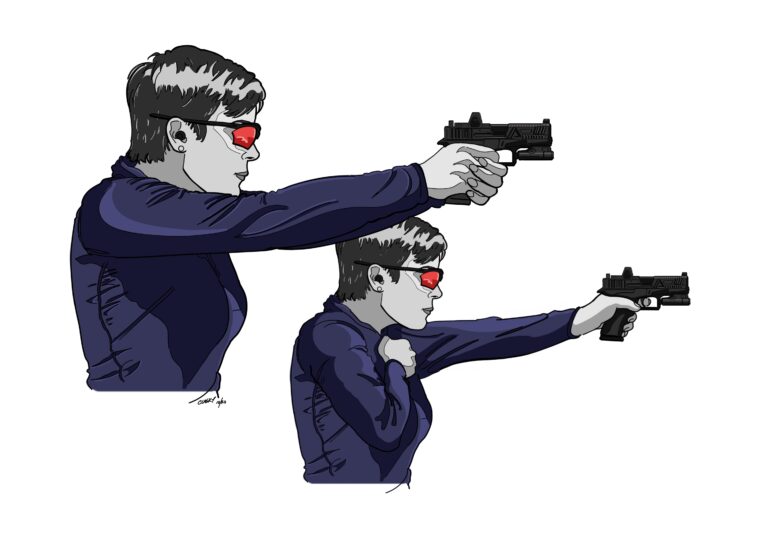
A foundation exercise The Compass Drill is designed to be a “balancing act” exercise intended to even out how your body and brain interface with the pistol in…
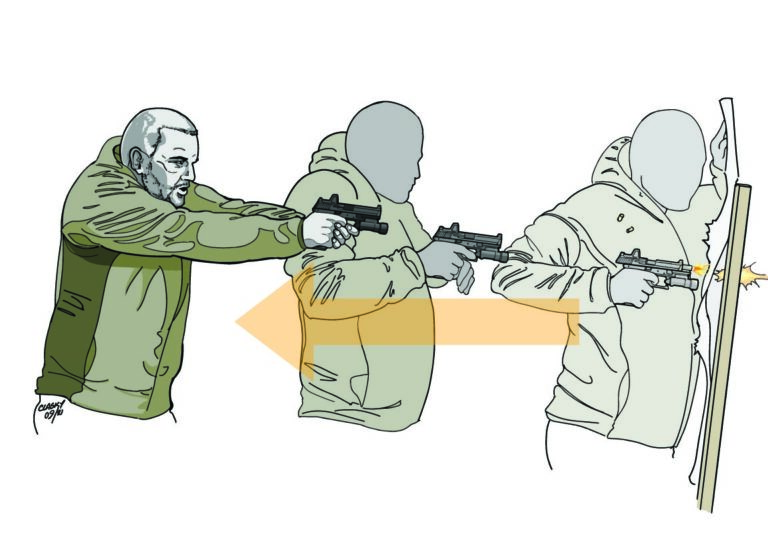
The skill of firing accurate rounds into a threat from retention is an underappreciated and under-practiced skill. Shooting from retention at close ranges can help ensure a threat…
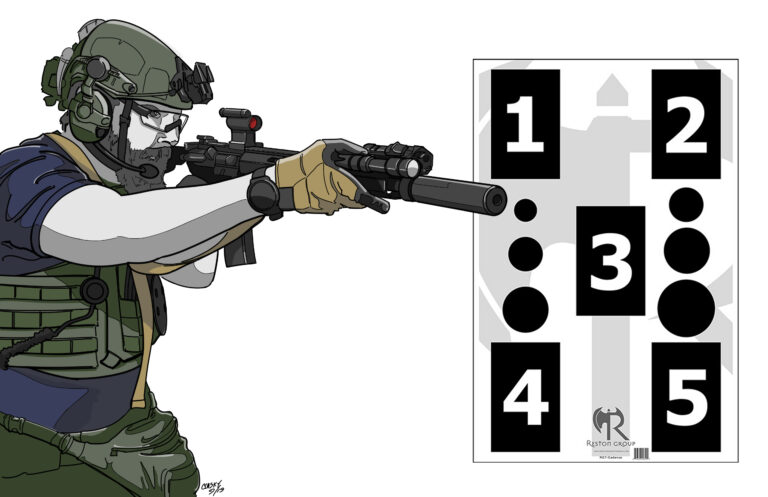
Text by Jared RestonIllustrations by Charles Lasky One of the core tenets of Reston Group has been to combine tactical training with the information gained from competition and…
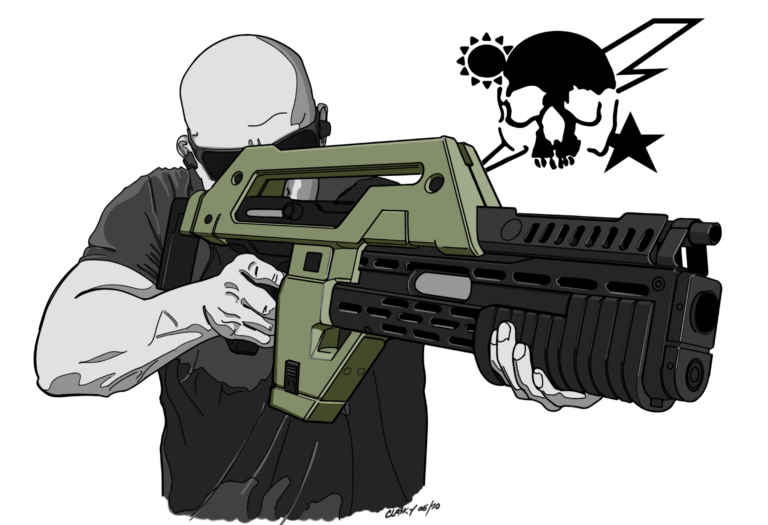
Shooting practice and performing live-fire drills are solid ways to get yourself into a rhythm, whether you’re looking for improved defensive reaction time or to cut down competition…
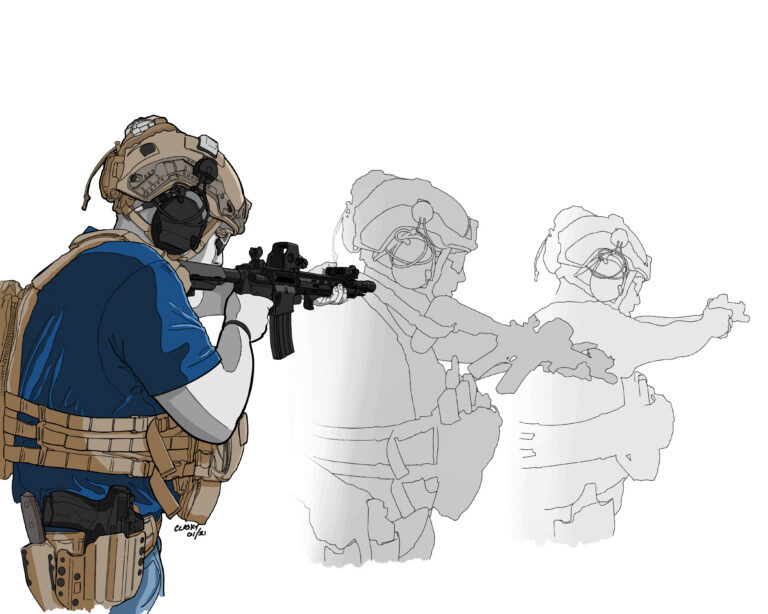
Most shooting exercises serve a specific purpose. Exercises like transition drills involve a common skill practiced by most dedicated students of firearms. A transition occurs for two reasons—because…

Shooting drills are an important part of formal training and an important part of practice. Whether for self-defense or competition, a drill establishes a goal, and goals are…
© 2025 UN12 Magazine
© 2025 UN12 Magazine
Wait! Don’t forget to